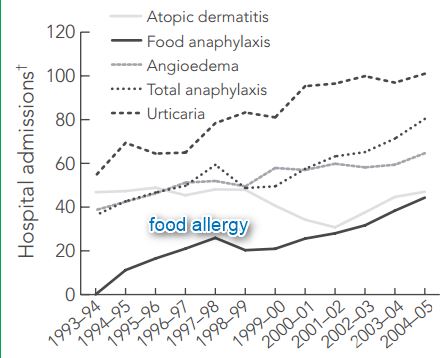Hypothesis – Australia has highest rate of food allergy due to avoiding the sun
Why Does Australia Appear to Have the Highest Rates of Food Allergy?
Pediatric Clinics of North America
Katrina J. Allen, MBBS, FRACP, PhDa, b, c, d, e, , , Jennifer J. Koplin, PhDa, d
a Centre of Food and Allergy Research, Murdoch Children’s Research Institute, The Royal Children’s Hospital, Melbourne 3052, Australia
b Department of Allergy and Clinical Immunology, The Royal Children’s Hospital, Melbourne 3052, Australia
c Department of Gastroenterology and Clinical Nutrition, The Royal Children’s Hospital, Melbourne 3052, Australia
d Department of Paediatrics, The Royal Children’s Hospital, University of Melbourne, Melbourne 3052, Australia
e Institute of Inflammation and Repair, University of Manchester, Manchester, UK
The 3 key hypotheses for the rise in food allergy in the 21st century are currently
(1) the hygiene hypothesis (which includes microbial diversity);
(2) the dual allergen exposure (or Lack) hypothesis, and
(3) the vitamin D hypothesis.
Note: hypothesis #1 and #2 would also be true anywhere around the world,
But only Australia has the most infants allergic to food
Australia started their avoidance of the sun campaign in the 1980s
Here is the graph of the resulting increase in food allergy in Australia

Food allergy in New Zealand 2.2X MORE likely if high vitamin D - 2016.pdf
📄 Download the PDF from Vitamin D Life
See also Vitamin D Life
Cancer Council of Australia recommends 30 minutes of daily sunshine – June 2014
Vitamin D research leads to surprising health tip – Australians need more time in the sun – May 2014
"No hat, no play" in Australian primary schools
Pages listed in BOTH the Autoimmune and Australia-NZ
{category}
